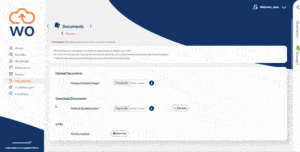While helping organisations to improve their handling of new hires, the webonboarding team receives some great insights into the everyday problems faced by hiring teams. For a free onboarding review – contact us for a consultation
In this series, we take a look at some of these real-world stories and how they help to highlight better ways to tackle employee onboarding:
The Situation: Gone in Three Days
What makes an employee decide to leave a new job within their first week? And what’s the business fallout when this occurs?
This is something we’ll be taking a closer look at with this particular hiring situation. It involved an experienced finance professional, somebody who had been working in the sector for a number of years.
With considerable experience and a background of working alongside auditing companies and finance teams, he found himself being headhunted by a recruitment agency.
They approached him for a finance director role that was being created to boost a particular unit of a business. He liked what he saw and he put himself forward. After going through the interview and assessment process, he was offered the position and accepted.
All seemed good.
Having worked his notice period, he was ready to make a fresh start with his employer. He arrived for his first day, he was greeted at reception and guided through to the finance team area. And that’s where he was left – standing in the middle of the office.
Importance of first impressions
He wasn’t introduced to anyone, he wasn’t shown to his desk, he wasn’t told what the plans were for his first day. Instead he was left feeling awkward, anxious and uncomfortable. He did the only thing he really could do and asked somebody at a nearby desk for help. Presumably as this was the finance team, they would know about his arrival.
So he introduced himself and explained that he was the new finance director but wasn’t sure where he should be. The person said not to worry, he could have his desk as he was leaving at the end of the week.
It seemed odd. No mention was made during the interview process of departures from the finance team. And when he asked who his replacement would be, the person responded, ‘You are’.
And this was just start of a muddled, chaotic and thoroughly off-putting first-day experience. From the moment he entered the office, alarm bells were ringing about the type of organisation he was joining.
By the third day, he had seen enough and made the decision to leave.
The Fallout
For the finance professional, finding an alternative role was a relatively painless process. As an experienced and capable manager, he was able to find a similar role elsewhere.
For the company, however, the loss meant they took quite a hit in terms of costs and resources.
This starts with the considerable fees that are involved with agencies and talent recruitment. Then there’s all of the costs associated with interviews and selection for such a senior role.
Interviews for this type of job require the involvement of high-level management. When you factor in their cost-per-hour, the costs really start to mount up.
And there’s also all of the onboarding time and resources that are needed to get paperwork signed off – offer letters, contract signing and welcome packages.
Whether these are printed and posted or handled via email, the information still has to be manually collated. It also has to be properly tracked to ensure everything’s completed before their first day.
But the biggest hit comes from having to replace the new starter, doubling all of the recruitment costs as the long, grinding process starts again.
The Takeaway
When a successful applicant accepts a role, the temptation is to think that the hard work is over. But having invested so much time and resources into finding the right person, all of this can so easily be frittered away by inadequate onboarding processes and a failure to properly integrating a new starter into your organisation.




